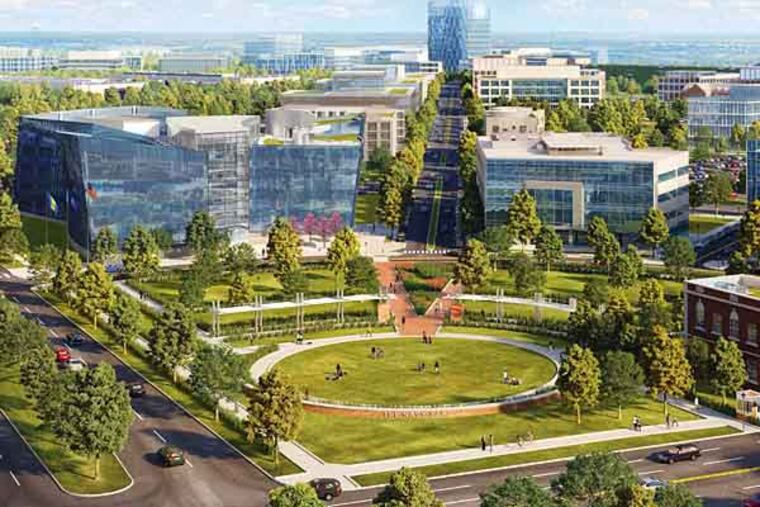Philadelphia will present updated plan for Navy Yard
The city Friday will present an update to its master plan for the former Philadelphia Navy Base that would extend commercial development south to the waterfront and create an urban campus on the Delaware River.

The city Friday will present an update to its master plan for the former Philadelphia Navy Base that would extend commercial development south to the waterfront and create an urban campus on the Delaware River.
Mayor Nutter and Robert A.M. Stern, architect of the detailed plan, will present artist renderings for the 1,200-acre former military base where 66,000 workers built and overhauled warships during World War II.
The city is also celebrating a milestone: 130 companies and 10,000 employees now work at the Navy Yard.
The businesses and their workers will get a free lunch Friday provided by a dozen food trucks outside the former Cruise Terminal at the foot of South Broad Street.
"There's virtually no other place like the Navy Yard," about as large as downtown Philadelphia, Nutter said. With easy access to I-95, and CSX and Norfolk Southern rail lines, Philadelphia International Airport, and the port, "it is a powerful asset in our economic-development toolbox," he said.
The drugmaker GlaxoSmithKline P.L.C. will move 900 workers into an $80 million, 208,000-square-foot office building Monday. An additional 400 to 500 employees will arrive Feb. 18.
The exterior of Glaxo's four-story building is all glass. Inside, there are no offices or cubicles. Radiating from the center, where there are bathrooms and stairs, are conference rooms with glass walls. Beyond that is open space for seating and desks.
"I can see out three sides of the building, and almost all the way through the building," Glaxo project manager Ray Milora said. "You have this constant flow of light."
Stern, whose architectural team was hired in 2003 by the Philadelphia Industrial Development Corp. (PIDC), Liberty Property Trust, and Synterra Partners to design a master plan for transforming the Navy Yard into a neighborhood with offices, shops, housing, open space, bike paths, and recreation trails, did the update because the city now has less land with which to work.
Although the Navy in 2001 signed over 1,000 acres, it retains 200 acres and wants to add up to 300,000 square feet of research facilities, PIDC president John Grady said. The Navy will get an additional 30 to 50 acres.
On the east end of the Navy Yard, 200 acres have been transferred to the Philadelphia port for a new marine terminal. The proposed Southport terminal coincides with deepening the Delaware's main shipping channel from 40 to 45 feet to accommodate bigger ships and commerce expected to come to the East Coast with the expansion of the Panama Canal.
"In evaluating the highest and best use of the land that we control, with less land, we put more of a premium on extending employment-generating activity, office, and research, with some industrial around it," Grady said.
Developers want to put residential apartments in the central "historic core" of the Navy Yard and have identified three buildings that could be converted.
Planners also propose constructing five or six buildings, no taller than 12 stories, for a total of 1,000 apartments "aimed at a young, professional, transient market that would add a lot of vitality to the campus," Grady said.
The apartment buildings would have ground-floor retail and "amenities that the industrial and office workers want," Grady added.